PHY 103: The Physics of Music
Fall 2015
Bausch and Lomb 407: Tu Th 9:40 - 10:55
Labs: W 2:00 - 4:40 (1), 4:50 - 7:30 (2)
PHY 403 is an exploration of music and acoustics using demonstrations and laboratory experiments. The class meets once per week for lectures. Students apply the lecture material during weekly sessions in the music lab (B&L 403), building and testing their own musical instruments. At the end of the semester, the class performs a short concert (or individual demonstrations) using instruments of their own design.
Location and Office Hours
| Instructor | TIs | |
| Segev BenZvi | Dahyun Chung | Luke Okerlund |
| B&L 405 | B&L 403 | B&L 403 |
| Th 9:30 - 11:00 | W 2:00 - 4:40 | W 4:50 - 7:30 |
Textbooks
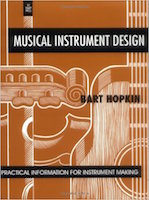
The course textbook is Musical Instrument Design by Bart Hopkin (ISBN-10: 1884365086), an excellent and inexpensive book about the physical principles behind the different families of instruments. The book also describes how to make music using highly creative and unusual instrument designs.
The following books are also on reserve at POA:
- An Introduction to the Psychology of Hearing by Brian Moore.
- Music, Cognition, and Computerized Sound: An Introduction to Psychoacoustics by Perry Cook.
- Measured Tones: The Interplay of Physics and Music by Ian Johnston.
- Fundamentals of Musical Acoustics by Arthur Benade.
- The Physics of Sound by Richard Berg and David Stork.
- Physics and the Sound of Music by John Rigden.
- The Physics of Musical Instruments by Neville Fletcher and Thomas Rossing.
- Why You Hear What You Hear by Eric Helling.
Syllabus
- Propagation of sound waves
- Normal modes and resonances
- Harmonic analysis
- Timbre
- Musical scales and temperament
- Loudness (measurement and perception)
- Psychoacoustics and audio illusions
- Room acoustics
Grading
| Weekly Lab Reports | 60% |
| Class Participation | 10% |
| Midterm | 10% |
| Final Project | 20% |
You are required to complete at least 8 out of 10 lab reports to get full credit during the fall semester. Due to the difficulty of setting up different equipment for different experiments, here are no make-up labs allowed -- hence the 8 out of 10 policy. Note that if you miss a lab, you will need to provide a valid excuse (religious holiday, personal emergency, etc.).
The midterm will be an in-class exam meant to test your conceptual understanding of the topics you learn about in the course.
For the final you will design and build your own instrument in the lab during the last month of the semester. We have tentatively scheduled a short (10-15 minute) concert on December 9 where you can show off your instrument. To get full credit you will need to be on the concert program. Students who cannot attend the concert may get credit by presenting their final projects in class.
Software
In the lab we will use the commercial software Adobe Audition to perform frequency analyses of your recordings and produce awesome spectrograms. However, if you wish to explore on your own there are several excellent open-source (and free) software packages that you can try out:
- Audacity:
An open-source alternative to Audition with most of the same features. - Praat:
An excellent software package for formant analysis of the human voice. Very fun to play with... - Overtone Analyzer:
A commercial frequency analyzer specifically designed for tone analysis and voice training for singers and musicians. Very nice but not free, unfortunately.
Lecture Notes
| 1 | Sep. 1 | Introduction to Waves |
| Wavelength, period, and energy of waves. Wave behavior: reflection, refraction, diffraction, and polarization. Longitudinal vs. transverse waves. | ||
| Reading: Hopkin Ch. 2, Berg and Stork Ch. 2, Heller Ch. 2 | ||
| 2 | Sep. 3 | Standing Waves and Harmonics |
| The wave equation. Traveling and standing waves on a string. Relationship between frequency and string length. Harmonics and overtones. | ||
| Reading: Hopkin Ch. 1, Berg and Stork Ch. 3 | ||
| 3 | Sep. 8 | Fourier Analysis and Sampling |
| Fourier's Theorem. The Nyquist-Shannon Sampling Theorem and the Nyquist Limit. | ||
| Reading: Hopkin Ch. 1, Berg and Stork Ch. 4 | ||
| 4 | Sep. 15 | Standing Waves in an Air Column |
| Longitudinal waves in an air pipe. Standing waves in open-open and open-closed pipes. Boundary conditions for pressure waves. Resonances: driving an air column with an open speaker. | ||
| Reading: Hopkin Ch. 6 | ||
| 5 | Sep. 22 | Scales and Temperament |
| Origins of musical scales. Perfect 4ths, 5ths, and triads. Pythagorean tuning and the circle of fifths. Just intonation. Equal temperament. | ||
| Reading: Hopkin Ch. 3, Berg and Stork Ch. 9 | ||
| 6 | Oct. 6 | Loudness and Amplification |
| The decibel scale. Perceived loudness and the phon scale. Acoustic amplification in the guitar, piano, and horns. | ||
| Reading: Heller Ch. 7, Fletcher and Rossing Ch. 9 and 12 (advanced). | ||
| 7 | Oct. 13 | Bars and Bells |
| Vibrational modes of bars. Inharmonic partials. Vibrational modes of bells and glasses. | ||
| Reading: Hopkin Ch. 3, Fletcher and Rossing Ch. 2 (advanced). | ||
| 8 | Oct. 20 | Drums |
| Drumheads, bodies, and attachments. Struck drums, friction drums, and singing drums. Vibrational modes of a circular membrane. | ||
| Reading: Hopkin Ch. 7, Fletcher and Rossing Ch. 3 (advanced). | ||
| 9 | Nov. 3 | Impedance |
| Acoustic impedance of surfaces and musical instruments. Impedance matching and mismatching. Wolf notes in string instruments. Analogs of Ohm's Law. | ||
| Reading: Hopkin Ch. 1, Heller Ch. 1. | ||
| 10 | Nov. 10 | Room Acoustics |
| Direct vs. indirect sound. Reverberation time RT60. Liveness, intimacy, clarity, and warmth. Acoustical absorption and Sabine's Equation. | ||
| Reading: Berg and Stork Ch. 8. | ||
| 11 | Nov. 17 | Auditory Illusions |
| Pitch illusions: Shepard tone and falling bells. Perception of tonal and temporal reflections. Sensory integration: the McGurk Effect. Illusions related to acoustical gaps and silences. Perceptual groupings (Deutsch Scale Illusion) and auditory streaming. The Tritone Paradox. | ||
| Reading: Cook. | ||
| 12 | Dec. 1 | Voice |
| The anatomy of the larynx and vocal tract. The vocal tract as a 1/4-wave resonator with power supply (lungs) and oscillator (vocal folds). Vowels and formants. The singer's formant. Pseudo-multiphonic singing: throat singing/overtone singing. Gender differences in voice. | ||
| Reading: Heller Ch. 17 |
Final Projects
A selection of the final projects from Fall 2015 (from people who sent me pictures):
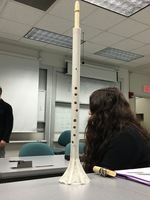
Shelby Strasser: |
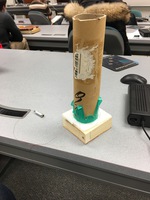
Amir Gibson: |
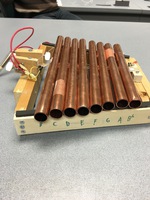
Eric Pinsker-Smith: |

Yuting Wang: |
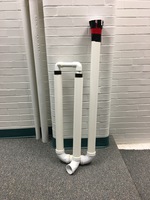
Thomas Kittross: |
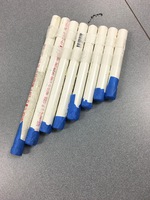
Zhongshu Gu: |
Credit and Usage
These lectures and the structure of the course are based heavily on the class lectures made by Alice Quillen.
Anyone who comes across this material and wishes to use it for their own courses is free to do so without requesting my permission. However, please cite S. BenZvi, Dept. of Physics and Astronomy, University of Rochester, 2015.
